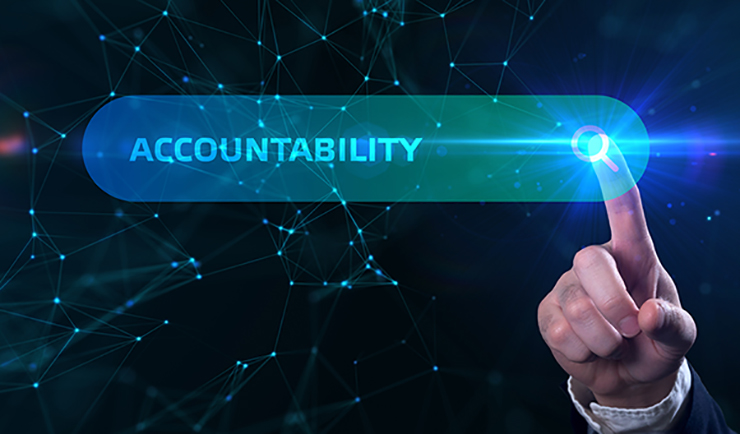
In today’s fast-paced business environment, many senior executives find themselves perpetually in fire-fighting mode. This means they seldom feel the bandwidth to focus on the things that are most important to move the company forward.
Marc reached out to me at a time when, in his words, he had “fallen prey to the tyranny of the urgent.”
“It’s critical that I make a pivot,” he said. “My board has set some stretch goals that will require most of my time. I was already fighting to focus on what is most important. Now, I just don’t know how to dig myself out of this hole.”
Indeed, the constant barrage of urgent issues that executives face can demand their immediate attention. And, as in Marc’s case, this often occurs at the expense of being able to focus on more important, long-term strategic goals. This mode of operation, while seemingly productive, can create a culture of quick fixes and reactive decisions, ultimately hindering sustainable growth and innovation. It can also mentally and physically drain even the greatest of executives.
What can you do when this happens?
The Perceived Problem: Urgency Over Importance
Executives often perceive their primary challenge as the need to address urgent issues swiftly. The pressure to respond immediately to crises can be overwhelming, leading to a perpetual cycle of urgent task management. This sense of urgency is fueled by several factors.
- Market Volatility: Rapid changes in market conditions demand quick responses to maintain competitive advantage.
- Stakeholder Expectations: Shareholders, customers, and employees expect prompt solutions to emerging problems.
- Technological Advancements: The fast-paced evolution of technology requires constant adaptation and rapid decision-making.
While addressing urgent issues is undeniably crucial, this focus often comes at the expense of more important, strategic initiatives that drive long-term success.
The Real Problem: A Culture of Reactivity
The real problem lies deeper than the immediate need to manage urgent tasks. It is rooted in a culture that prioritizes reactivity over proactivity. This culture manifests in several ways:
- Short-Term Focus: Emphasizing immediate results over long-term goals creates a myopic view of success.
- Lack of Reflection: The constant state of urgency leaves little room for reflection, analysis, and learning from past experiences.
- Decision-Making Fatigue: Continuous quick fixing can lead to decision-making fatigue, where the quality of decisions deteriorates over time.
- Inadequate Planning: Insufficient time and resources are allocated to strategic planning, resulting in reactive rather than proactive leadership.
This reactive culture not only hampers strategic growth but also creates an environment where systemic issues remain unaddressed, leading to recurring problems.
Marc admitted that his executive team struggled with the same issue, firefighting becoming the norm at the expense of focusing on the strategic.
“And if they are challenged in this way, it probably means that their own teams are also doing the same,” he said.
“I can guarantee it,” I responded. “If you and your team are experiencing this, it’s sure to ripple throughout the company. However, this can be turned around – and it starts with you.”
Solutions: Shifting from Firefighting to Strategic Leadership
To break free from the cycle of firefighting, executives must cultivate a culture of strategic leadership. This requires a shift in mindset, processes, and organizational structure.
Here are actionable solutions to facilitate this transformation.
-
Prioritize Strategic Planning
- Dedicated Time for Strategy: Allocate specific times in the calendar exclusively for strategic planning and reflection. This helps ensure that long-term goals are not overshadowed by daily urgencies.
- Scenario Planning: Regularly engage in scenario planning exercises to anticipate potential challenges and opportunities, allowing for more prepared and proactive responses.
-
Empower and Delegate
- Build a Strong Leadership Team: Develop and empower a leadership team that can handle urgent issues, freeing up senior executives to focus on strategic initiatives.
- Delegation and Trust: Delegate authority and decision-making to capable team members, fostering a culture of trust and accountability (see previous article on delegation).
-
Foster a Learning Culture
- Encourage Reflection: Promote a culture where reflection and learning from past experiences are valued. Regularly conduct post-mortem analyses of projects and crises to identify lessons learned. When Marc and his team implemented this, they not only pinpointed areas for improvement, but they used this as a learning lab to cultivate innovation.
- Continuous Improvement: Implement continuous improvement processes that encourage innovation and the proactive identification of potential issues before they become urgent.
-
Implement Effective Systems and Processes
- Crisis Management Framework: Develop a robust crisis management framework that outlines clear roles, responsibilities, and protocols for handling emergencies efficiently.
- Proactive Risk Management: Establish comprehensive risk management practices that identify, assess, and mitigate potential risks before they escalate into crises.
-
Balance Urgency and Importance
- The Eisenhower Matrix: Utilize tools like the Eisenhower Matrix to differentiate between urgent and important tasks, ensuring that important but non-urgent tasks receive adequate attention. Marc’s team began to review this as part of their weekly meeting to bring consensus to priorities and reported saving hours weekly by doing so.
- Strategic KPIs: Define and track key performance indicators (KPIs) that align with long-term strategic goals, ensuring that progress towards these goals is regularly monitored and prioritized.
-
Promote a Visionary Mindset
- Vision and Mission Alignment: Regularly communicate the organization’s vision and mission to ensure that all team members are aligned with the long-term strategic direction.
- Innovation and Creativity: Encourage innovative thinking and creativity within the organization, fostering an environment where new ideas and approaches are welcomed and explored.
Breaking free from the cycle of firefighting requires a deliberate and concerted effort to shift towards strategic leadership. By prioritizing strategic planning, empowering teams, fostering a learning culture, implementing effective systems, balancing urgency and importance, and promoting a visionary mindset, executives can transform their organizations from reactive to proactive. This shift not only enhances the organization’s ability to navigate immediate challenges but also positions it for sustained long-term success. In the end, moving away from firefighting and towards strategic leadership is not just a necessity—it’s a strategic imperative.
This transformation is not easy and requires a significant shift in mindset and organizational culture. The list of potential strategic solutions may feel daunting. I encourage you to pick one or two areas and start there, integrating more along the way. Even one tool listed above will move the needle for you.
Indeed, the rewards—sustainable growth, innovation, and a resilient organization—are well worth the effort. Executives who embrace this shift will find themselves better equipped to lead their organizations through the complexities of today’s business environment and beyond.
© Patti Cotton and patticotton.com. All rights reserved. Unauthorized use and/or duplication of this material without express written permission from the author is strictly prohibited. Excerpts and links may be used, provided that attribution is made to Patti Cotton and patticotton.com, with links thereto.

Patti Cotton reenergizes talented leaders and their teams to achieve fulfillment and extraordinary results. For more information on how Patti Cotton can help you and your organization, click here.



